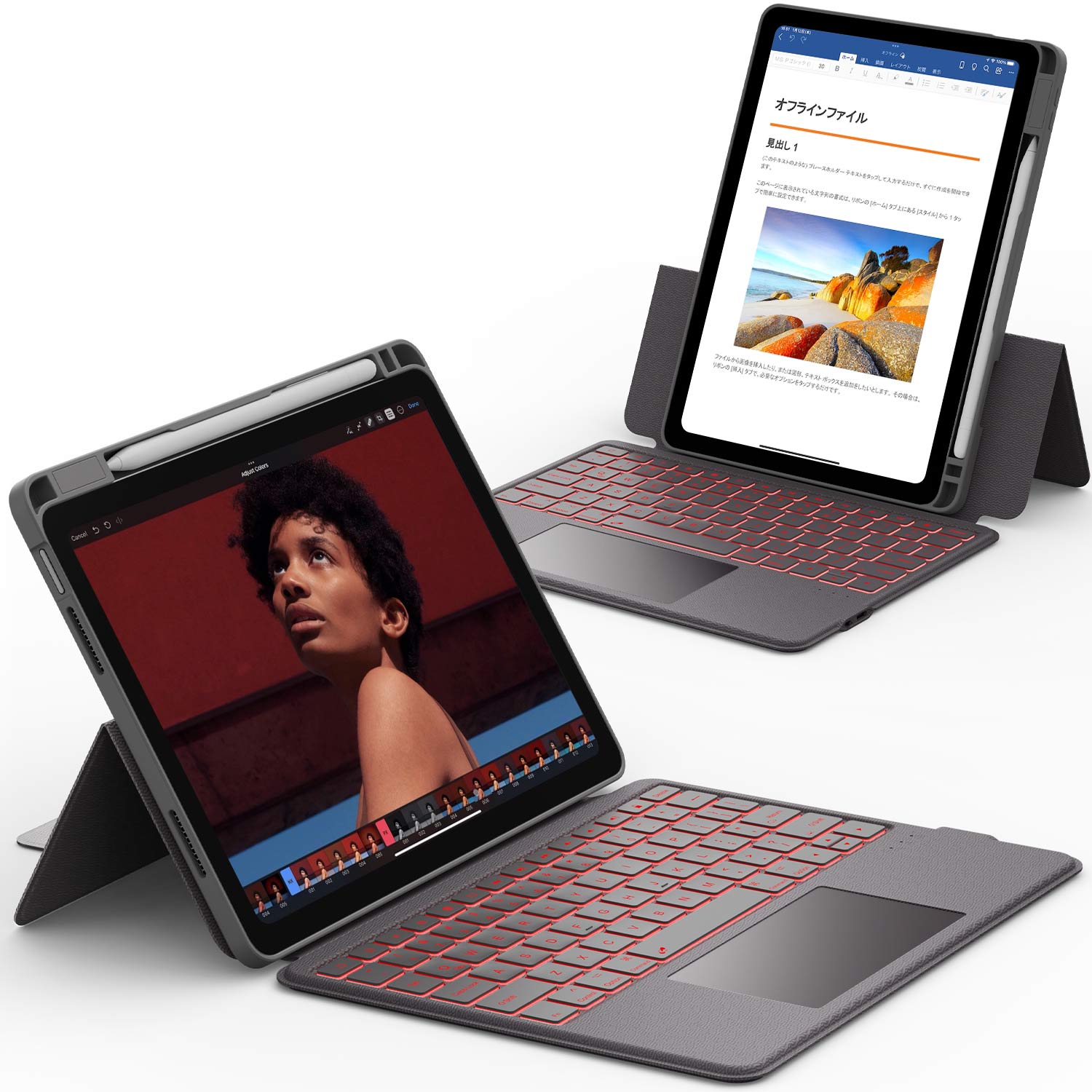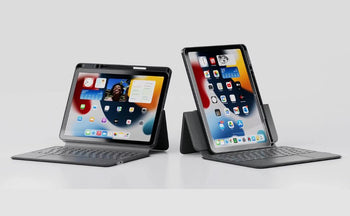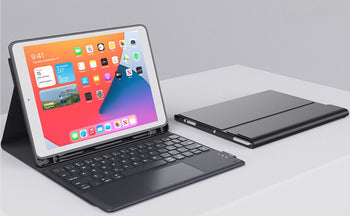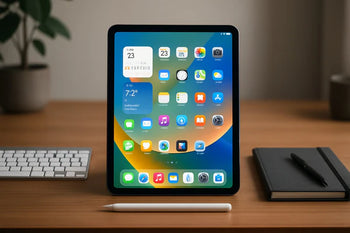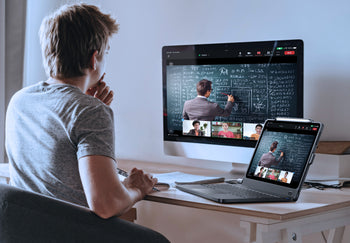If your keyboard and mouse are not working, it can bring your workday to a sudden stop. Whether they’ve lost connection, run out of power, or simply stopped responding, the fix is often easier than you think.
Most issues come down to weak batteries, outdated drivers, or Bluetooth pairing problems. A quick reset or reconnection usually gets things back on track.
If your setup keeps failing, it might be time to upgrade to a more reliable option like the Chesona Wireless Keyboard and Mouse Combo—built for smooth, multi-device performance on Mac, Windows, Android, and iOS.
Upgrade your setup with a reliable Bluetooth keyboard and mouse combo that connects seamlessly to multiple devices and keeps you working without interruptions.
Why Your Keyboard and Mouse Might Stop Working

If your keyboard and mouse suddenly stop responding, it’s often due to power problems, connection issues, driver conflicts, or wireless interference. These can sneak up on you, but most of the time, fixes aren’t too complicated.
Dead Batteries or Power Connection Issues
Battery-powered devices are notorious for cutting out when you least expect it. Wireless keyboards and mice chew through batteries, and there’s not always much warning.
Check the battery indicator lights. Most wireless devices have LEDs that give you a hint when power’s running low. If the lights are dim or gone, swap in fresh batteries right away.
Rechargeable devices can also run out of juice without much notice. Plug your device in for a few minutes and see if it comes back to life. If the battery’s totally dead, some models won’t work until they’ve charged a bit.
With wired devices, check your USB cable for damage—bent connectors, frayed spots, or kinks can interrupt power. If you spot problems, try a different cable or port.
Some USB ports just don’t deliver enough power. Try plugging your device into a different port, maybe on the back of your PC.
Bluetooth or USB Receiver Malfunction
Bluetooth connections can drop out for all kinds of reasons—pairing glitches, software hiccups, or just bad luck. Sometimes your device says it’s connected, but nothing happens.
Remove the device from your Bluetooth settings and pair it again. That usually clears up weird connection errors.
USB receivers (those tiny dongles) can act up, too. They’re easy to bump or dislodge.
Try unplugging the receiver for ten seconds, then plug it back in. That often resets the connection. If your device has a reset button underneath, press and hold it for a few seconds to clear out old pairing data.
Outdated or Corrupted Device Drivers
Driver issues crop up when Windows can’t talk to your keyboard or mouse properly. This might happen after a Windows update or if the drivers get corrupted somehow.
Run Windows Update—just type "check for updates" and install what’s available. That can sometimes fix things automatically.
Or, open Device Manager (right-click Start > Device Manager), find your keyboard or mouse, right-click, and select "Update driver."
If the drivers are seriously messed up, uninstall the device in Device Manager and restart your computer. Windows should reinstall the right drivers on its own.
Wireless Interference or Range Problems
Distance matters for wireless devices. Most work best within three feet of your computer.
Move closer and clear any obstacles—metal, electronics, even thick walls can mess with wireless signals.
Other wireless gadgets (WiFi routers, phones, Bluetooth speakers) can interfere, too. Try turning off nearby devices for a minute to see if that makes a difference.
If things improve, you’ve probably found the culprit. Sometimes just moving the USB receiver to a new port or using a USB extension cable helps boost the signal and cut down on interference.
Type comfortably anywhere with a lightweight portable keyboard for iPad designed for smooth, responsive typing on the go.
How to Fix Keyboard and Mouse Not Working

Most of the time, keyboard and mouse problems are caused by dead batteries, bad connections, or outdated drivers. Testing your devices on another computer is a good way to figure out if you’re dealing with a hardware or software issue.
Step 1 – Check Battery Levels or Recharge Devices
Dead batteries are the usual suspects with wireless sets. Even if your device seems to have some charge left, low power can make it act up.
Swap in a fresh set of batteries—don’t just replace one at a time. Many devices need both batteries to be equally strong to work right.
For rechargeables:
- Plug in the charging cable for at least half an hour
- Watch for charging lights
- Try using the device while it’s plugged in, if it allows
Pop open the battery compartment and check for corrosion or gunk. Wipe the contacts with a dry cloth if needed. And don’t forget—some devices have a tiny power switch that’s easy to bump off by mistake.
Step 2 – Reconnect or Re-pair via Bluetooth or USB Receiver
Connection hiccups are super common. Always check physical connections first before diving into wireless settings.
For USB receivers:
- Unplug and replug the receiver
- Try different USB ports—front and back
- Move the receiver closer to your devices
For Bluetooth devices:
- Toggle Bluetooth off and on in your settings
- Remove the device from your Bluetooth list
- Put the keyboard and mouse into pairing mode
- Add them back as new devices
Restart your PC after reconnecting. That helps Windows pick up the devices properly. Keep everything close by during setup—don’t wander off with the mouse while pairing.
Step 3 – Update Bluetooth and USB Drivers on Your Device
Outdated or broken drivers can stop your keyboard and mouse cold. Windows usually tries to keep drivers up to date, but it’s not perfect.
Update in Device Manager:
- Right-click Start and open Device Manager
- Expand "Keyboards" and "Mice and other pointing devices"
- Right-click each device and select "Update driver"
- Pick "Search automatically for drivers"
For USB controllers:
- Expand "Universal Serial Bus controllers"
- Update each USB Root Hub
- Restart your computer afterwards
If Windows can’t find the right drivers, grab them from your device maker’s website. Make sure you get the exact model. If there’s a firmware update available, give that a shot too.
Step 4 – Test on Another Computer, Tablet, or OS
Testing your keyboard and mouse on a different computer is a quick way to see if the issue is with your hardware or your main PC’s software.
Plug your devices into another Windows PC, Mac, or even a tablet. If they work there, your hardware’s fine and the problem’s with your main computer.
If they work elsewhere:
- Boot your main computer into Safe Mode
- Try the devices in Safe Mode
- Run Windows Update for the latest fixes
- Consider a System Restore to before things went wrong
If they don’t work anywhere:
- Your hardware’s probably shot
- Check if you’re still under warranty
- Might be time to shop for replacements
This step saves you a ton of time—it’s better to know what you’re dealing with before you go down a troubleshooting rabbit hole.
Step 5 – Replace with a Reliable Multi-Device Combo Like Chesona
If your current gear is toast, investing in something reliable can save you future headaches. Look for combos that work on multiple devices and operating systems.
Features to watch for:
- Long battery life (six months or more)
- Multi-device connectivity
- Compatibility with Windows, Mac, tablets
- Strong wireless connection
- Solid build quality
Multi-device keyboards and mice let you switch between your computer, tablet, and phone with a tap. It’s a big step up from basic, single-device sets.
Stick with brands that offer regular driver updates and decent support. Check out user reviews to see how the devices hold up over time—real-world feedback is worth its weight in gold.
Why Choose the Chesona Wireless Keyboard and Mouse Combo
The Chesona combo stands out for its reliable connections and long battery life. The quiet keys and precise mouse work across pretty much any device or operating system you throw at them.
Multi-Device Pairing via Bluetooth 5.0/3.0 and 2.4G Wireless
With the Chesona combo, you get three ways to connect: Bluetooth 5.0 for the latest tech, Bluetooth 3.0 for older gear, and a 2.4GHz wireless dongle for the most stable link.
Just plug the USB receiver into your computer and pair the devices. For Bluetooth, turn it on in your device settings, look for 'BT 5.0 Keyboard', and connect. Easy.
The keyboard and mouse pair separately, so you’ll need to set up both if you want to use them together.
During 2.4GHz pairing, a green light flashes on the indicator—handy for knowing when things are actually happening.
Rechargeable Battery with Long-Lasting Power
Chesona’s built-in rechargeable batteries are a real perk. You won’t be burning through AAAs every month like with other wireless sets.
Charge each device with a USB cable. The batteries last for weeks on a single charge with typical use.
When the battery’s low, you get a warning light—no more surprise shutdowns mid-project.
Charging is quick and you can keep using the devices while they top off, which is super convenient.
It’s cheaper in the long run and way less wasteful than tossing out disposable batteries all the time.
Full-Size Keyboard with Quiet, Responsive Keys
The keyboard gives you a full layout—number pad, function keys, arrows, all the essentials.
Keystrokes are quiet, so you won’t annoy your coworkers or wake anyone up at home.
Every key responds fast. No lag, no missed letters, even if you type like you’re in a hurry.
The spacing feels natural—no weird hand contortions required.
Function keys double as shortcuts for things like brightness, volume, and media. They work across Windows, Mac, and mobile devices, which is honestly pretty handy.
Smooth, Precise Mouse for Mac, iOS, Windows, and Android
The mouse glides on just about any flat surface—no mouse pad needed. Its optical sensor tracks your movements accurately, whether you’re at a desk or using a coffee table.
Cross-platform compatibility means you can use it with nearly any device—Windows, Mac, iPad, Android tablets, phones, you name it.
It fits comfortably in your hand, even after hours of use. Most people should find the size just right—no hand cramps.
Clicks are soft and responsive. The scroll wheel is smooth, making it easy to zip through documents or web pages.
DPI settings let you tweak cursor speed to your liking. Switch between precision and speed with a quick tap.
Sleek Design Perfect for Home, Office, or Travel Use
The black finish looks sharp in any setup—home, office, wherever. It blends in nicely with modern laptops and desktops.
Both the keyboard and mouse are slim enough to slip into a laptop bag. They’re lightweight, so you can take them anywhere without feeling weighed down.
No wires means less clutter—your desk stays neat, and setup is a breeze.
The build feels sturdy. You won’t worry about them breaking if you’re on the go a lot.
And the receiver tucks inside the mouse when you’re not using it, so you won’t lose that tiny dongle during travel. Nice touch.
Shop the Chesona Wireless Keyboard and Mouse Combo for Reliable, All-in-One Performance
You’ll spot the Chesona combo at most online retailers or electronics shops. Honestly, the price feels fair—definitely cheaper than buying a keyboard and mouse separately.
People seem to love the steady connection and how comfortable the keyboard feels. Most folks don’t mention any annoying drops or pairing headaches.
Everything you need comes in the box: keyboard, mouse, USB receiver, and charging cables. No scrambling for extras.
Multi-device support makes this a great pick if you’re always hopping between your computer, tablet, and phone. It’s a relief not to juggle separate gear.
If you get stuck during setup, you’ll find technical support and user manuals online. That usually sorts out problems pretty fast.
Keep your device safe from drops, scratches, and spills with durable iPad protective cases built for everyday use and travel.
Conclusion: Keyboard and Mouse Not Working
When your keyboard and mouse stop working, it’s usually something simple—like a drained battery, a loose connection, or outdated drivers. A quick reset or reconnection often gets everything running smoothly again.
If your devices keep failing, consider upgrading to a more dependable option like the Chesona Wireless Keyboard and Mouse Combo. It’s built for stability, comfort, and seamless multi-device use across Mac, Windows, Android, and iOS.
Next up: How Do I Get My iPad Back to Full Screen?
Frequently Asked Questions
Keyboard and mouse issues usually tie back to power settings, hardware, or the way your system’s configured. It’s rarely as random as it feels.
Why does my mouse and keyboard suddenly not work?
Power-saving settings can put your devices to sleep, especially on laptops. Disable USB Selective Suspend in Power Options to fix it. Windows updates or BIOS issues can also cause connection problems.
How do I unfreeze my keyboard and mouse?
Press Ctrl + Alt + Delete to see if your system responds. Restart your computer to reload drivers and clear memory errors. If that fails, try switching USB ports or toggling Bluetooth.
How do I restart my laptop if my keyboard and mouse are not working?
Hold the power button for 10 seconds to force a shutdown. Press it again to restart your laptop. If available, use a physical reset button or remove the battery briefly.
How to fix PC turns on but no display or keyboard?
Reset your BIOS by removing the CMOS battery for a few minutes. Reconnect it, then check your USB ports and cables. Boot into BIOS and load default settings to restore hardware detection.
